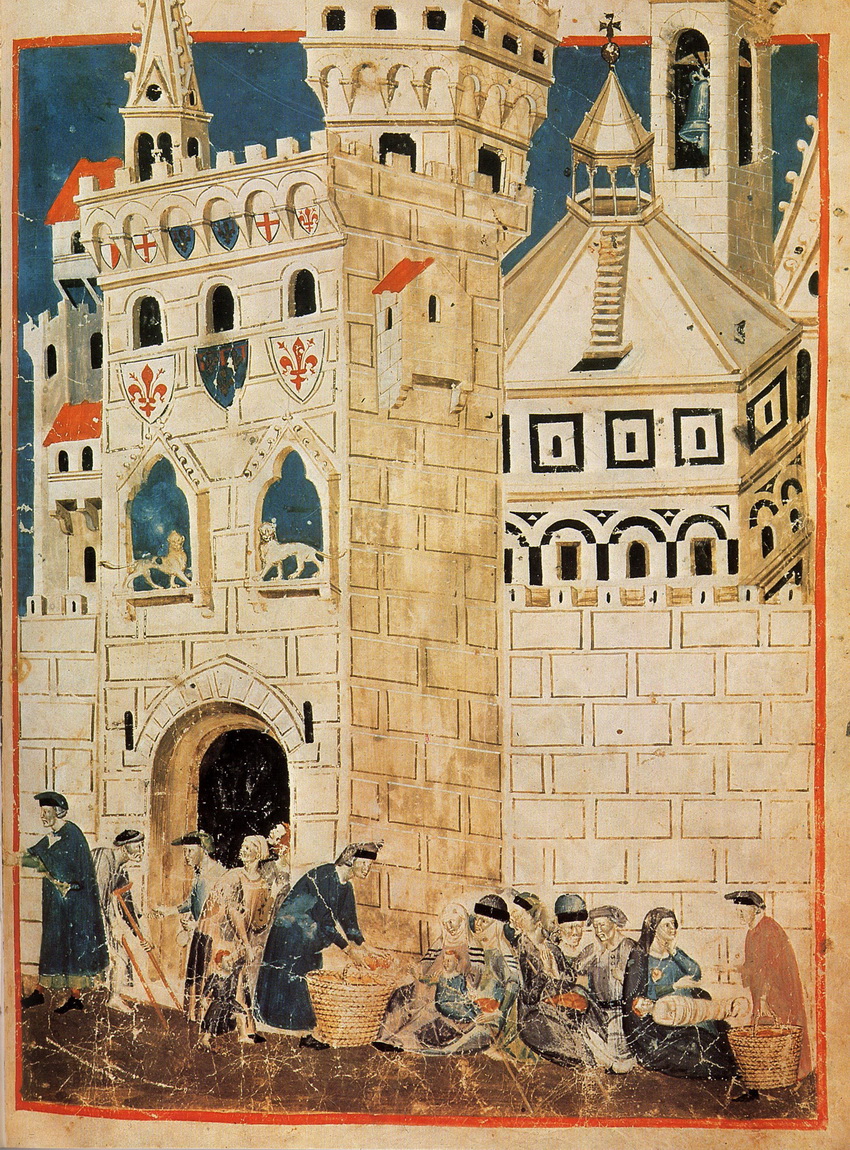05: Florentine Politics, Florentine Humanists

“Biadaiolo” manuscript, Biblioteca Laurenziana: at the gates of Florence
Florentine Politics in the Fourteenth Century
International trends:
- Holy Roman Empire declines as major political player
- Florence’s domestic politics are interconnected with bigger political issues
- Florence a major peninsular power
Domestic trends:
- Florence resists trends towards governments dominated by a single lord
- Florence sets up long-term government structures
- Florence also has long-term problems: weak leadership, factions
Holy Roman Empire: death of Henry VII 1313
Florence’s potential turns to a signore
- 1313 Robert King of Naples: signore 5 years with dictatorial powers
- 1326 King Robert’s son, Charles of Calabria asked to be military captain,
governor for 10 years (threat from Lucca) Charles dies 1328 - 1342 Walter of Brienne, Duke of Athens: 1343 Florentine revolt
Reminder: Basic government structures
 |
restricted by 1328 to guild members (21 guilds) and Guelfs—ca 5-6k selection by lot (borse) Scrutiny (squittinio) Signoria: 9 priors, 2 month terms College of the Priors (advisors) 12 buonuomini. 3-month term 16 gonfalonieri 4-month term |
- Ca 15 magistracies
- Special executive commission: balia
- 2 legislative assemblies
- Judicial
Why Walter of Brienne: Financial Crisis of Hundred Years War
- Succession problem in France;

- one of claimants Edward III of England
- Edward: loans for invasions
- 1339 Edward repudiates debt: Bardi, Peruzzi bankrupcies
- Failed war with Lucca to recoup money
- 1342 Walter of Brienne invited to repair situation
- 1343 Walter removed
Andrea Orcagna, Duke of Athens expelled thanks to St Anne
|
Paolo Uccello, Monument to John Hawkwood, Duomo |
rise of condottieri: shift to mercenaries among city-states |
Taxes
- Gabella: on goods brought into Florence
- estimo: direct tax, graduate according to wealth
- taxes on subject regions
- Prestanza: forced loan to city. Interest paid.
- Monte: innovation: public debt
1348: Black Death: post-plague population 50-70,000
Gente nuova versus old families
Avignon Papacy
Power vacuum kept central Italy unstable
Shifts in traditional alliances
Rome: Cola di Rienzi
Milan: Visconti lordship
Florence allies with Milan against Rome:
War with Gregory XI (1375-78) “War of the Eight Saints”
1376: papal interdict; instability in Florence
1378 Gregory XI dies; negotiations go on with Urban (then Schism)
1378 (summer) Revolt of the Ciompi
Michele di Lando: by Antonio Bortone (1895)
1402 Expansion by Giangaleazzo Visconti, Milan ends with his death
Map: Europe ca 1400 


